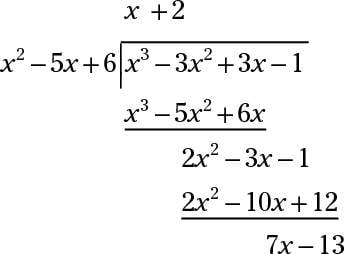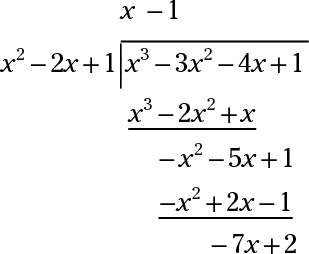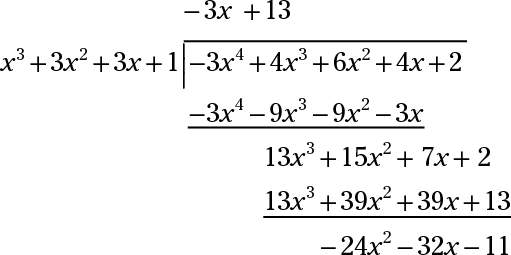An oblique or slant asymptote acts much like its cousins, the vertical and horizontal asymptotes. In other words, it helps you determine the ultimate direction or shape of the graph of a rational function. An oblique asymptote sometimes occurs when you have no horizontal asymptote. Oblique asymptotes take special circumstances, but the equations of these asymptotes are relatively easy to find when they do occur.
The rule for oblique asymptotes is that if the highest variable power in a rational function occurs in the numerator — and if that power is exactly one more than the highest power in the denominator — then the function has an oblique asymptote.
You can find the equation of the oblique asymptote by dividing the numerator of the function rule by the denominator and using the first two terms in the quotient in the equation of the line that is the asymptote.
Sample question
Find the equation of the oblique asymptote in the function

y=x+ 2. To find this equation, you have to divide the denominator of the function rule into the numerator. This step requires long division. You can’t use synthetic division because the divisor isn’t a binomial in the form x – a. Here’s what the long division looks like:

Ignore the remainder, and just use the first two terms in the quotient in the equation of the line.
Practice questions
Find the equation of the oblique asymptote in the function

Find the equation of the oblique asymptote in the function

Find the equation of the oblique asymptote in the function

Find the equation of the oblique asymptote in the function

Following are answers to the practice questions:
The answer is y = x– 2.
Use synthetic division or long division to divide the denominator into the numerator:

The first two terms in the quotient are the slope and y-intercept of the oblique asymptote’s equation.
The answer is y = x+ 1.
Use synthetic division or long division to divide the denominator into the numerator:

The first two terms in the quotient are the slope and y-intercept of the oblique asymptote’s equation.
The answer is y = x –1.
Use long division to divide the denominator into the numerator:

The first two terms in the quotient are the slope and y-intercept of the oblique asymptote’s equation.
The answer is y = –3x+ 13.
Use long division to divide the denominator into the numerator:

The first two terms in the quotient are the slope and y-intercept of the oblique asymptote’s equation.

